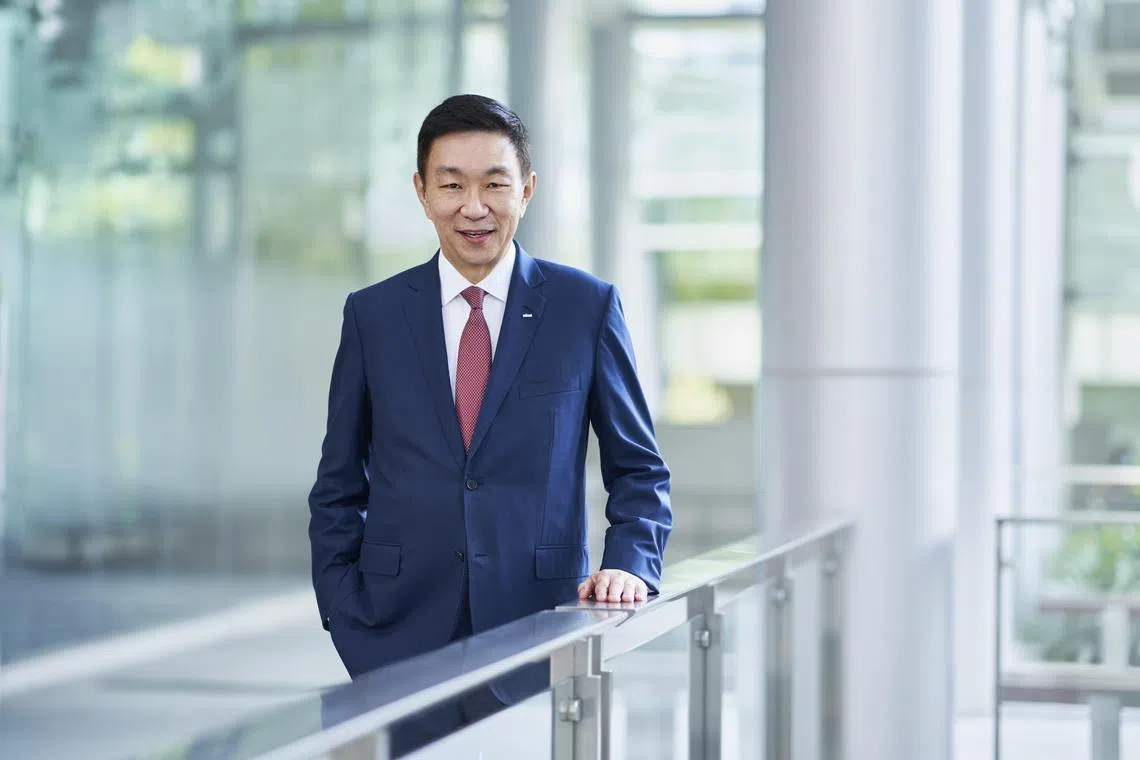Keppel aims to quadruple assets under management to $200 billion by 2030
Sign up now: Get ST's newsletters delivered to your inbox

Keppel aims to pivot away from lumpy profits in the order book and focus on expanding recurring income, said CEO Loh Chin Hua.
PHOTO: KEPPEL CORP
Sharanya Pillai
Follow topic:
SINGAPORE - Keppel Corp is aiming to raise its current $50 billion in assets under management (AUM) to $200 billion by 2030 under its drive to be a leading global asset manager.
The new target was disclosed by chief executive Loh Chin Hua in the company’s annual report released on Thursday.
Keppel will be investing in solutions that help its customers in their digitalisation and net-zero journeys.
“We will accelerate Keppel’s evolution into a global asset manager with strong operating capabilities, focused on creating sustainability-related solutions, which are seeing strong demand,” Mr Loh said in the report.
He also provided details of three new funds: One is the flagship Keppel Core Infrastructure Fund launched in 2022 with a target size of US$2.5 billion (S$3.3 billion), which positions Keppel to capture the growing demand for sustainable infrastructure in Singapore and the region, he said.
Another is the Keppel Sustainable Urban Renewal Fund, which was also launched in 2022, with a target size of US$2 billion. It is focused on opportunities to retrofit and repurpose existing buildings.
“A sizeable share of real estate development over the next decade is expected to be based on retrofitting and repurposing existing buildings,” said Mr Loh.
Such buildings are greener, less costly and can be upgraded faster than the time it takes to put up new buildings, thus contributing to the circular economy, he added.
“By incorporating smart and sustainable features into retrofitted buildings, we can also help enhance the assets’ performance and value,” he said, citing the transformation of 20-year-old Keppel Bay Tower into Singapore’s first Green Mark Platinum (Zero Energy) commercial building as an example.
Beyond these two funds, Keppel is set to launch the Keppel Asia Infrastructure Fund II. This follows from Fund I, which has been fully deployed with six assets.
Through this, Keppel can contribute to speeding up global energy transition and decarbonisation, said Mr Loh.
The company is also focused on its own green goals. It has set a target for half its electricity use in operations to be from renewable energy sources by 2025, with a view to reaching 100 per cent by 2030, the report said.
Pivot away from lumpiness
Keppel’s new targets come as the company has been fostering more collaboration among its various units under its Vision 2030 Plan.
At present, most of the new projects approved by the company involve cross-business unit collaboration, compared with only a small proportion just a few years ago, said Mr Loh.
As a result, external revenue from cross-business unit collaboration across the group amounted to about $560 million, up 60 per cent from 2020, when Vision 2030 was launched.
Another key focus of Vision 2030 “is to pivot away from lumpy profits in the order book and property development business, and to focus on expanding recurring income”, said Mr Loh.
In line with this, Keppel has spun off its logistics and offshore and marine businesses. It is now doing less residential development for sale.
“To be clear, logistics, offshore and marine and residential development are good businesses, but they may not be the best fit with Keppel’s Vision 2030, which sees us focusing on growing recurring income and building scalable businesses that fully leverage our asset-light model,” he said. THE BUSINESS TIMES

